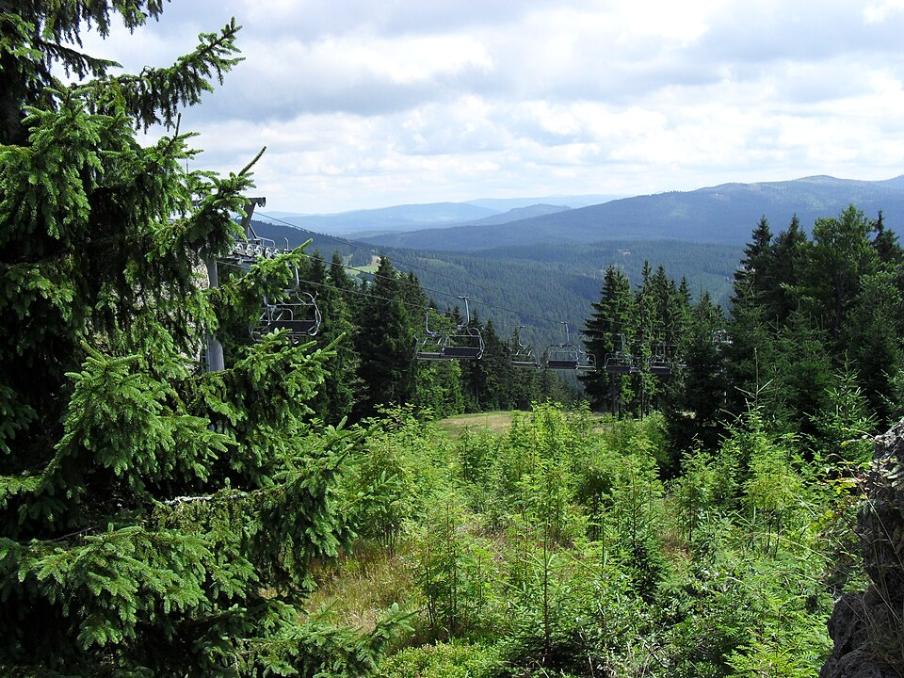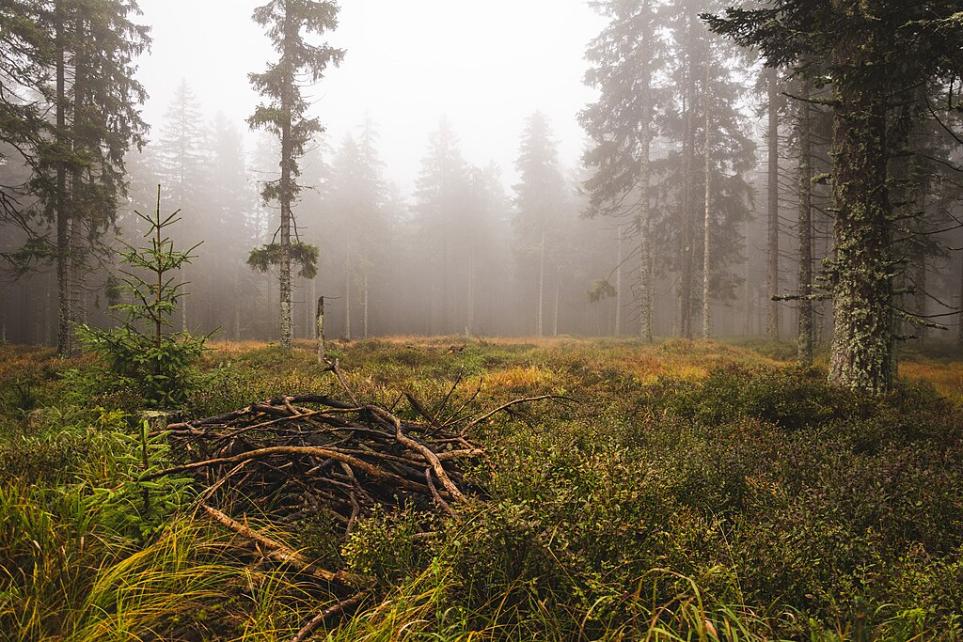
Timelines 10
Man and his Senses 10
Man and his Inventions 10
Geography 10
Fauna 10
Timelines 10
Man and his Senses 10
Man and his Inventions 10
Geography 10
Fauna 10

Forests are not merely trees on a map; they are repositories of water, memory, and debate. In Central Europe, the Bohemian Forest—known locally as Šumava—looms as one of the continent’s last large wooded highlands, a landscape of raised peat bogs, glacial lakes, and plateaus that feed rivers and frame village life. In 1990, the area was designated a UNESCO biosphere reserve, and on 20 March 1991, its most valuable portions were raised to national park status. Šumava’s mosaic of habitats and long stretches of spruce-dominated woodland make it both an ecological asset and, increasingly, a policy challenge.
Geography and Character
The Bohemian Forest occupies a ridge along the Czech Republic’s border with Germany and Austria; it is marked by extensive forest cover, peat bogs, and pockets of old-growth forest (Boubín being an oft-cited example). Historically, the natural composition of the range has been altered by planting (spruce plantations now dominate large tracts), which in turn has shaped the forest’s response to wind, drought, and pests. The result is a landscape that looks ancient at a glance but has a modern, human-made seam running through it.
Scale and Function
Forests are a major element of Czech Republic’s landscape: roughly a third of the country is wooded (figures vary slightly by year and dataset, but the order of magnitude is clear—approximately 33–34 percent). These woods are not only habitat; they store water, stabilise soils, and have long been woven into local livelihoods and tourism economies. Šumava, in particular, carries a large cultural importance as a “dark, highland” place of peat and mist—the kind of forest that also, in our present century, draws hikers and skiers in equal measure.
A Modern Threat Framed in Ecological Terms
Perhaps the single most conspicuous management problem in recent decades has been the bark beetle and the vulnerability of non-native spruce stands. Where spruce plantations were introduced for timber, outbreaks of Ips typographus and related species have increased mortality and opened the question: should forest managers intervene with salvage felling, or should the forest be allowed to respond naturally? This technical question has social consequences; how one answers it changes the very meaning of “protection.”
Šumava Today: Wilderness and Recreation
Šumava today is also a public place. Travel accounts and local guides remind us that the forest is not only an object of conservation science but also of tourism—trails, observation points, and small hotels package the landscape for visitors who want peat bogs and panoramic ridgelines (the region is commonly promoted to travellers as a “fairytale” forest). In short, Šumava is both wilderness and a recreational area; each role demands different policies from managers and different expectations from the public.
Forests in India: Scale and Species
Elsewhere in Asia, the story is different in scale and species, but not in the problems it poses. India’s Western Ghats are one of the planet’s recognised biodiversity hotspots (many sources note the region’s exceptional endemism and the high number of globally threatened species). Where Šumava’s principal dilemma focuses on planted spruce and pest dynamics, the Western Ghats face habitat loss, fragmentation, and a long list of endemic species that require careful, place-specific stewardship.
Policy Response and Social Models
India’s approach to forest protection has, over the last few decades, emphasized people as partners rather than mere bystanders. Joint Forest Management (JFM) emerged in the early 1990s as a formalised way to share responsibility between state forest departments and local communities; policy documents from the early 1990s codified how committees, benefit-sharing, and local patrols might be combined to protect both resource use and biodiversity. In practice, JFM became a way to anchor conservation in livelihoods—an explicitly social institutional pathway that differs from the “national park only” approach found in parts of Europe.
An Instructive Case: Barnawapara Sanctuary
An instructive case is Barnawapara Sanctuary in Chhattisgarh. There, a case study shows how eco-tourism was built around JFM societies: local people maintained huts, trained as guides, and ran hospitality services; the first organised tourist groups left Raipur in 2002 under an inexpensive package that combined wildlife viewing and cultural visits. The result—according to the study’s authors—was not only modest revenue for villagers but a decline in illegal logging and improved local surveillance of wildlife.
Different Histories, Shared Tactics
Šumava’s management debate—whether to prioritise natural regeneration or to protect timber values and nearby livelihoods through active interventions—is not unrelated to the choices India confronted in forming JFM. One asks whether to prioritise non-intervention as a purer ecological ideal; the other insists on negotiation with people whose daily lives intersect the forest. Both approaches have merits and limits; both require governance that is clear about who decides, who benefits, and who bears risk.
New Narratives of Wood and Climate Resilience
There is a third thread to these forest stories: contemporary Czech practice is beginning to bundle forestry with design and low-carbon ambitions. A recent architecture project—a timber headquarters project—signals how wood is being staged not only as commodity but as modern material, part of a low-carbon building logic and an attempt to sustain local timber economies. In other words, the forest’s future is being written in timber as well as policy documents.
Shared Lessons and Collaboration
What, finally, binds Šumava’s peat bogs and India’s rainforests is the need for plural solutions. Šumava needs careful ecological judgements about non-native plantations and pest-driven mortality; India’s hotspots need institutions that combine scientific management with local stewardship. There is scope for exchange: technical know-how about remote sensing, support for eco-tourism that benefits local communities, and research partnerships under the political umbrella of expanding India–Czech collaboration in science and innovation, with recent joint statements underlining cooperation across environment and technology.
A Closing Thought
Forests are, in equal measure, reservoirs of water and reservoirs of human hope. Šumava’s peat bogs and the Western Ghats’ rainforests are different chapters of the same story—landscapes that require careful reading and patient policy. Whether the solution lies in non-intervention, in measured and managed salvage, in community committees, or in tourism-driven incomes, the practical test will be whether people who live beside the trees see conservation as a promise rather than a penalty.
Sources:
https://tinyurl.com/46zwf5mu
https://tinyurl.com/bdcssmrh
https://tinyurl.com/5azwyaa3
https://tinyurl.com/5azwyaa3
https://tinyurl.com/yc53ahpx
https://tinyurl.com/yve6scu5
https://tinyurl.com/yc4upujs
https://tinyurl.com/4xua7733
https://tinyurl.com/2r9b8b7e
https://tinyurl.com/mt44mfdr